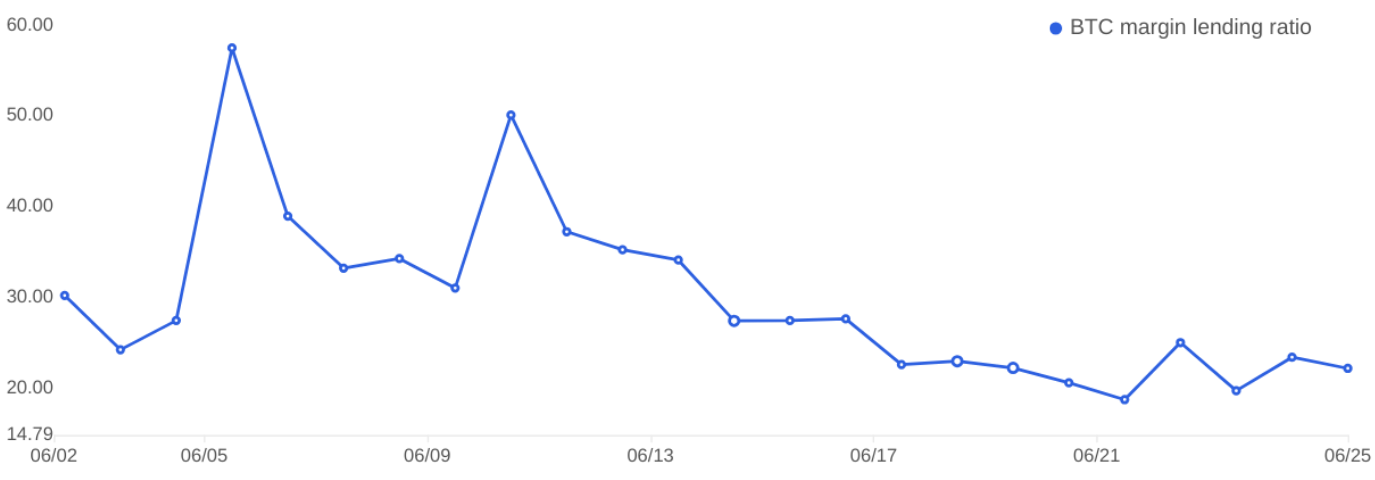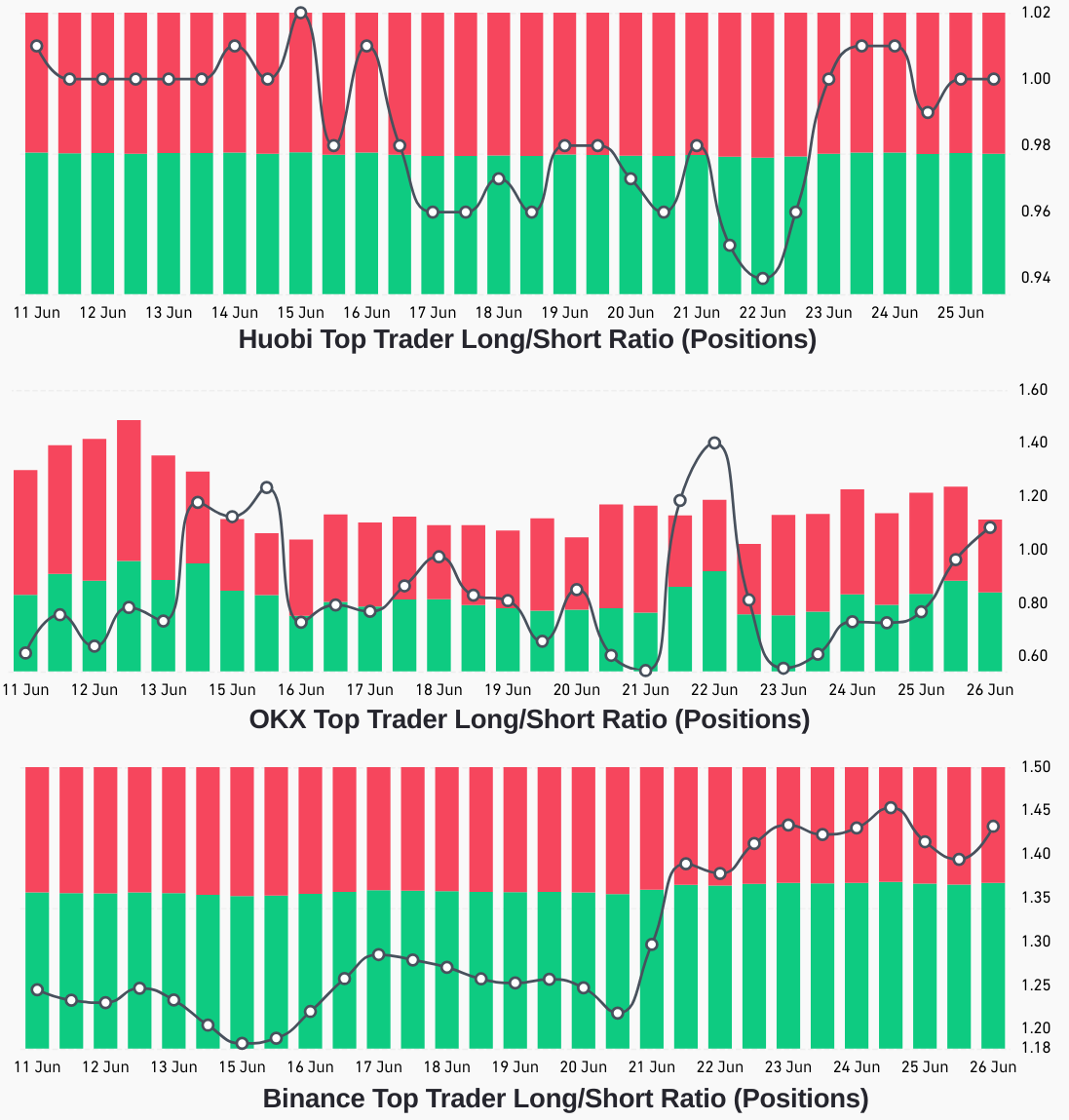Tento príspevok bol pôvodne publikovaný na stránke https://cointelegraph.com/news/bitcoin-price-30k-support-springboard a autorom článku je Cointelegraph By Marcel Pechman. Tento článok je iba kópia originálneho článku.
https://images.cointelegraph.com/cdn-cgi/image/format=auto,onerror=redirect,quality=90,width=840/https://s3.cointelegraph.com/uploads/2023-06/cf858fc8-855a-4637-9525-a38e13836267.jpgBitcoin margin and futures markets display strength as institutional appetite surges after multiple spot ETF requests.

Market Analysis
After a failed rally above $31,000 on June 23, Bitcoin (BTC) has sustained the $30,300 resistance for the past three days. Curiously, this happened while gold reached its lowest level in three months, trading at $1,910 on June 22, down from a $2,050 peak in early May.
Investors now question how solid Bitcoin’s $30,000 support is. So analyzing what caused the recent price rally is essential to understanding how traders are positioned on BTC margin and futures markets.
Why did BTC price break above $30,000?
Some analysts attribute Bitcoin’s recent 21.5% gains in 11 days to BlackRock’s spot Bitcoin exchange-traded fund (ETF) filing. But other events might have fueled the cryptocurrency gains. For instance, on June 26, HSBC Bank in Hong Kong reportedly introduced its first local cryptocurrency services using three listed crypto ETFs.
Moreover, the ProShares Bitcoin Strategy ETF, a Bitcoin futures fund, experienced its largest weekly inflow in a year at $65 million, with its assets topping $1 billion. It was the first BTC-linked ETF in the United States and is one of the most popular among institutional investors.
But, more importantly, the U.S. crypto regulatory environment may be improving after a period marked by enforcement actions from the Securities and Exchange Commission (SEC) aimed at exchanges supposedly operating as unregistered securities brokers.
Related: How security, education and regulation can mitigate rising crypto scams
On June 25, Federal Reserve governor Michelle Bowman said that financial institutions had been left in a “supervisory void” in terms of emerging technologies, including digital assets. Bowman added that policymakers have been relying on “general but non-binding statements,“ leaving substantial uncertainty and imposing new business requirements after significant investments have been made.
In that sense, a draft bill in the U.S. House of Representatives aims to prohibit the SEC from denying digital asset trading platforms registration as a regulated alternative trading system. Published on June 2, the proposed legislation would allow such firms to offer “digital commodities and payment stablecoins.“
Bitcoin margin, futures suggest bullishness
Now let’s look at Bitcoin derivatives metrics to better understand how professional traders are positioned amid improved regulatory perspectives and a sizable institutional inflow.
Margin markets provide insight into how professional traders are positioned because they allow investors to borrow cryptocurrency to leverage their positions.
OKX, for instance, provides a margin-lending indicator based on the stablecoin/BTC ratio. Traders can increase their exposure by borrowing stablecoins to buy Bitcoin. On the other hand, Bitcoin borrowers can only bet on the decline of a cryptocurrency’s price.

The above chart shows that OKX traders’ margin-lending ratio bottomed at 17 on June 20 but has improved over the past four days. The movement indicates a prevalence of margin longs as the present 24x ratio favors bullish stablecoin lending.
Still, investors should analyze the Bitcoin futures long-to-short metric, which excludes externalities that might have solely impacted the margin markets.

There are occasional methodological discrepancies between exchanges, so readers should monitor changes instead of absolute figures.
Top traders at Huobi vastly increased their longs between June 22 and June 24 as Bitcoin price broke above the $30,000 resistance.
On the other hand, OXK’s top traders initially increased their shorts on June 22 and June 23, but subsequently reverted their positions by adding bullish bets.
Lastly, the top traders at Binance started adding longs on June 21 and have kept increasing bullish positions until June 23.
Bitcoin’s $30,000 support showing strength
Overall, Bitcoin bulls have added leverage-long positions using margin and futures markets backed by the positive momentum from multiple spot Bitcoin ETF requests, heavy institutional inflow and a more rational approach from U.S. lawmakers.
The SEC’s regulation-by-enforcement approach is not backed by some U.S. Federal Reserve governors and has faced some serious backlash in the U.S. House of Representatives. For example, Representative Warren Davidson has introduced the SEC Stabilization Act, citing “ongoing abuse of power” and demanding the removal of Gary Gensler as chair of the SEC.
Given the favorable scenario toward cryptocurrencies, Bitcoin bulls should now have the upper hand to sustain the $30,000 BTC price support level in the coming weeks.
This article does not contain investment advice or recommendations. Every investment and trading move involves risk, and readers should conduct their own research when making a decision.



